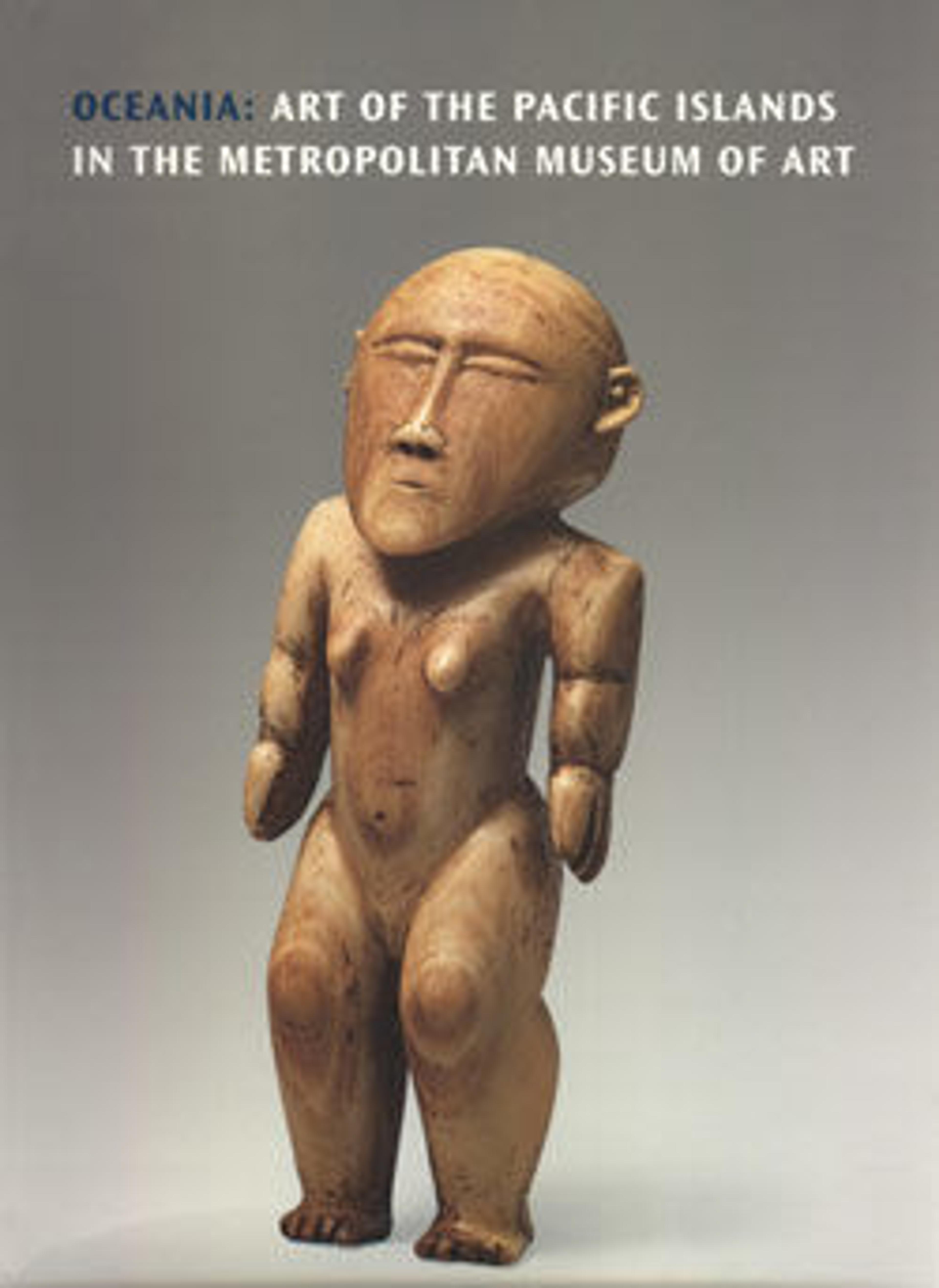Ceremonial Lime Container (Bandi Na Iavo)
The Iatmul and other Middle Sepik peoples use betel nut, the fruit of the areca palm, which is chewed with lime made from burnt shells or coral and other substances to produce
a mild stimulant effect. Among the Iatmul, the ornate containers and spatulas used respectively to hold and serve the lime had ceremonial as well as practical functions. Ceremonial lime containers were presented to newly initiated boys by their maternal uncles to mark their newly achieved status. The tops of these containers have a hole for the insertion of the lime spatula, and the lower ends are
frequently adorned with carvings depicting totemic animals or other supernatural beings. This example is inverted to show the carving to better advantage. The lower ends of Iatmul lime spatulas were carved with a series of ridges. To express pride, assertiveness, or anger, Iatmul men rapidly thrust the spatula in and out of the lime container so that the ridges, rubbing against the edges of the hole in the top, produced a harsh grating noise.
a mild stimulant effect. Among the Iatmul, the ornate containers and spatulas used respectively to hold and serve the lime had ceremonial as well as practical functions. Ceremonial lime containers were presented to newly initiated boys by their maternal uncles to mark their newly achieved status. The tops of these containers have a hole for the insertion of the lime spatula, and the lower ends are
frequently adorned with carvings depicting totemic animals or other supernatural beings. This example is inverted to show the carving to better advantage. The lower ends of Iatmul lime spatulas were carved with a series of ridges. To express pride, assertiveness, or anger, Iatmul men rapidly thrust the spatula in and out of the lime container so that the ridges, rubbing against the edges of the hole in the top, produced a harsh grating noise.
Artwork Details
- Title:Ceremonial Lime Container (Bandi Na Iavo)
- Date:late 19th–early 20th century
- Geography:Papua New Guinea, Middle Sepik River
- Culture:Iatmul or Chambri
- Medium:Bamboo, wood, paint, fiber
- Dimensions:H. 24 × W. 2 7/8 × D. 2 7/8 in. (61 × 7.3 × 7.3 cm)
- Classification:Wood-Containers
- Credit Line:The Michael C. Rockefeller Memorial Collection, Bequest of Nelson A. Rockefeller, 1979
- Object Number:1979.206.1457
- Curatorial Department: The Michael C. Rockefeller Wing
Audio
1771. Ceremonial Lime Container
0:00
0:00
We're sorry, the transcript for this audio track is not available at this time. Please email info@metmuseum.org to request a transcript for this track.
More Artwork
Research Resources
The Met provides unparalleled resources for research and welcomes an international community of students and scholars. The Met's Open Access API is where creators and researchers can connect to the The Met collection. Open Access data and public domain images are available for unrestricted commercial and noncommercial use without permission or fee.
To request images under copyright and other restrictions, please use this Image Request form.
Feedback
We continue to research and examine historical and cultural context for objects in The Met collection. If you have comments or questions about this object record, please contact us using the form below. The Museum looks forward to receiving your comments.
